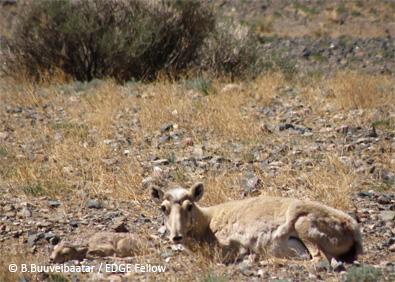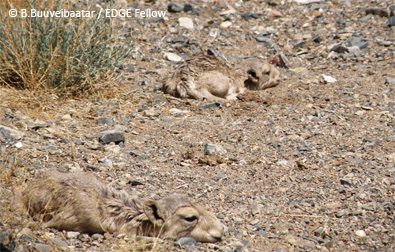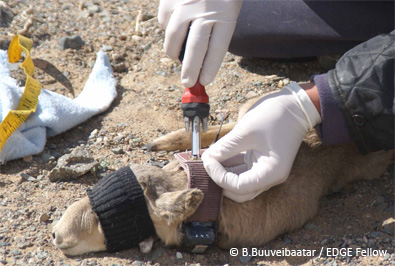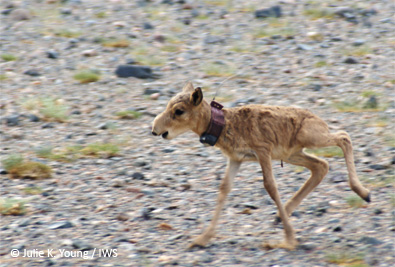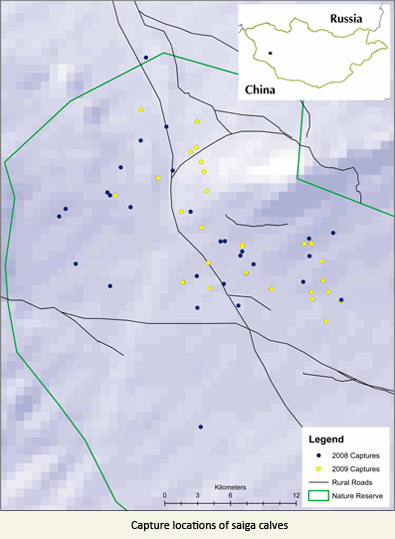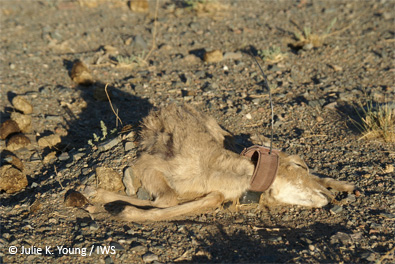EDGE supports Mongolian conservationist Buuvei through the EDGE Fellows programme to research threats to saiga. Here is an account of his most recent fieldwork:
In June 2008, the joint project between Wildlife Conservation Society and Mongolian Academy of Sciences initiated field survey to understand survival and mortality of saiga calf in western Mongolia. This year, we repeated the field survey at same place.
Saiga calves are effective hider first few days and it’s difficult to find them. Twins were separated at least 3 m from each other to mitigate detectability to predators.
We captured and collared 40 new born saiga calves within a week. First calf was captured on 12 June (1 day earlier than last year).
9 sets of twins (total 18 calves) were twin and 22 calves were singletons. Of these 23 calves were males and others were females. Body weight of collared calves was averaged 2.8 kg and did not differ between sexes.
Expandable VHF radio-collars were fitted with calves. Because the collars expand as the calves grow and ultimately rot away they have no impact on calves themselves.
Red fox (Vulpes corsac) was the most frequently observed carnivore in the study site. During the capture effort, 3 collared calves were killed by red fox (Vulpes corsac). Further, we witnessed 4 incidents of fox predating on calves during the observation. Low density of small mammals due to bad vegetation may force foxes to prey on newborn saiga calves.
Total 21 radio-collared calves have survived since June 2008. Currently, total of 58 saiga calves (37 from this year, 3 calves already died because of fox predation) are being monitored by trained saiga ranger from WWF Mongolia Office.
If you would like to support Buuvei’s vital research on the Critically Endangered saiga, please become an EDGE Champion, or donate here.
